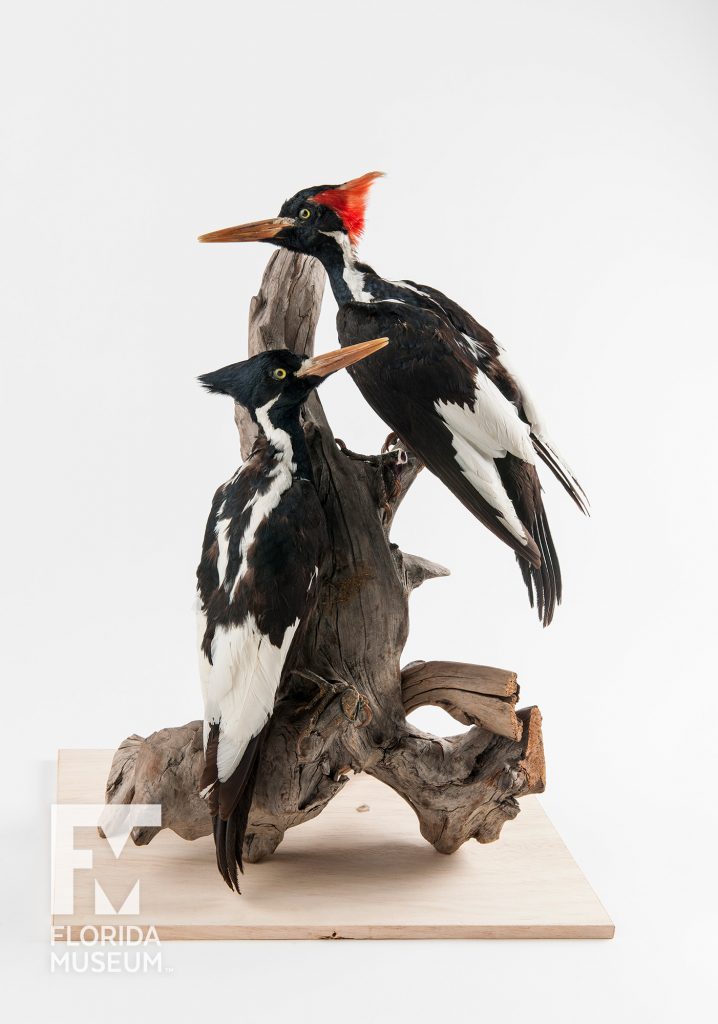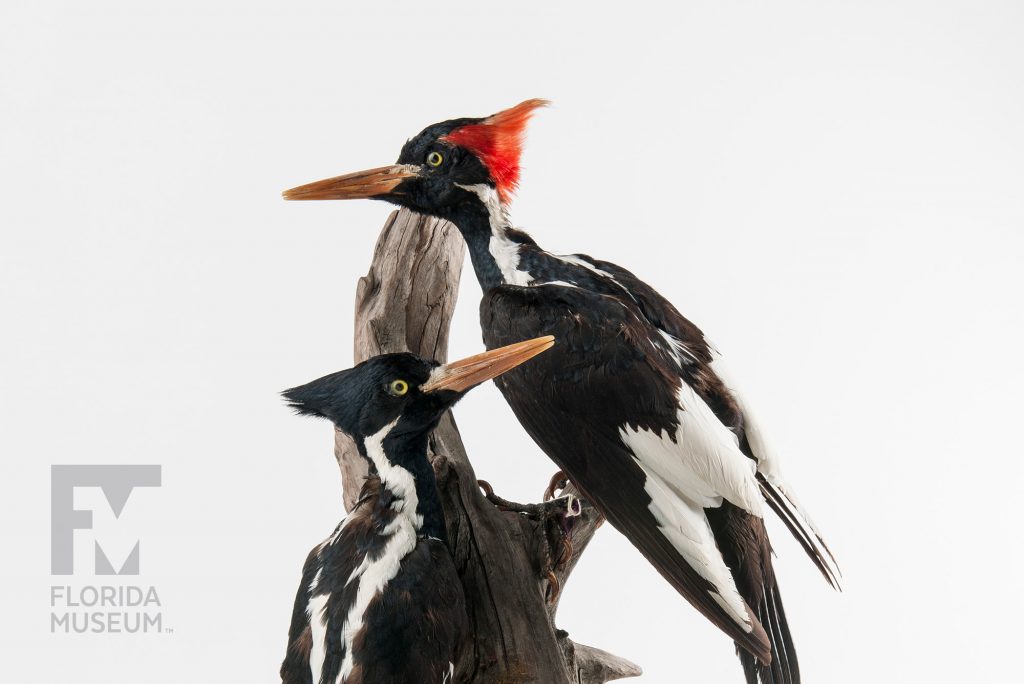The Ivory-billed Woodpecker, an iconic bird of the American Southeast, declined rapidly as its forests were logged on massive scales. The last died out in Louisiana by 1944. Despite controversial sightings since, no proof has been produced.
Summary
Ivory-billed Woodpecker (Campephilus principalis)
From Baker Co., Florida
Collection
Story
The Ivory-billed Woodpecker is no doubt one of America’s most spectacular bird species, but it is also one of the saddest chapters in bird conservation. The species was formerly widespread in the southeastern United States, from the coastal plain of Texas across to Florida and up to North Carolina, and also in the lower Mississippi River Valley north to southern Illinois. A separate population bred in the mountains of eastern Cuba.
During the 1800s the species became increasingly scarce as its preferred old-growth bottomland forest and longleaf pine woods were cleared for lumber and to make room for agriculture. By the 1920s, Ivory Bills were almost gone as hunters decimated the remaining populations.
The last Ivory Bills were found in a tract of woods in northeastern Louisiana owned by the Singer Sewing Corporation. The only research on the biology of the Ivory-billed Woodpecker was conducted there in the 1930s. Despite pleas to save this forest, Singer logged this tract to make frames for sewing machines in the early 1940s.
The last bird, a female, was seen in 1944. Since that time there have been enumerable reports of live birds, especially the well-publicized reports in central Arkansas. In 2004, the fuzzy and short Luneau video was offered as verified proof of their continued existence, but subsequent interpretation of this video cast doubt that the bird filmed was an Ivory Bill. Other hopeful reports came from Louisiana and north Florida, but no one was able to confirm that Ivory Bills are present. The Cuban population persisted into the 1980s, but it too became extinct due to logging. Sadly, most ornithologists now think the bird is gone forever.
Andy Kratter
Collection Manager, Ornithology*
Florida Museum of Natural History
Additional Information
Listen to an excerpt of an Ivory-billed Woodpecker recording from the Florida Museum Bird Sounds Catalog:
Exhibit
On display Sept. 23, 2017-Jan. 7, 2018, Rare, Beautiful & Fascinating: 100 Years @FloridaMuseum celebrated the Museum’s rich history. Each Museum collection was asked to contribute its most interesting items and share the stories that make them special. Though the physical exhibit is closed, this companion website remains online, providing an opportunity to experience the Florida Museum’s most treasured specimens.
Exhibit Area: Extinction
Theme: Extinct Birds
 Want to see more? Explore more than 300 breathtaking color photos of plants, animals, fossils and cultural heritage materials from the Florida Museum of Natural History’s collections in the award-winning book All Things Beautiful available from the University Press of Florida.
Want to see more? Explore more than 300 breathtaking color photos of plants, animals, fossils and cultural heritage materials from the Florida Museum of Natural History’s collections in the award-winning book All Things Beautiful available from the University Press of Florida.
*This title was accurate at the time the exhibit was on display in 2017. Please visit the collection website to verify current staff and student information.

